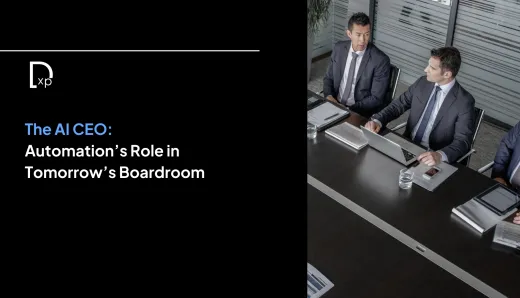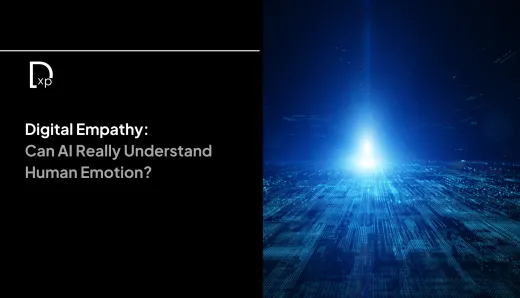Generative AI vs. Traditional AI: What C-Suite Executives Need to Know

Introduction: The AI Landscape for Decision-Makers
Artificial intelligence has become a cornerstone of modern business strategy, but not all AI is created equal. For C-suite executives, understanding the distinction between traditional AI and generative AI is critical to making informed decisions that drive innovation and competitive advantage. While traditional AI focuses on analyzing data and optimizing processes, generative AI takes innovation to the next level by creating entirely new outputs. This blog explores these differences, their implications for business, and why generative AI is rapidly becoming a game-changer across industries.
Traditional AI: Efficiency Through Data Analysis
Traditional AI is built to analyze historical data, identify patterns, and make predictions based on predefined rules. It excels in optimizing processes, automating repetitive tasks, and enhancing operational efficiency. For example, traditional AI powers recommendation algorithms like those used by Netflix or e-commerce platforms, enabling businesses to predict customer preferences and tailor offerings accordingly.
However, traditional AI operates within fixed boundaries—it cannot create new content or solutions beyond its programming. Virtual assistants like Siri or Alexa exemplify this limitation; while they can answer queries and perform tasks efficiently, they lack the ability to innovate or think creatively. For businesses focused on streamlining operations or improving accuracy in decision-making, traditional AI remains a powerful tool.
Generative AI: Creativity Meets Technology
Generative AI represents a paradigm shift in artificial intelligence. Unlike traditional AI, which analyzes existing data, generative AI uses advanced neural networks to create entirely new outputs—whether it’s text, images, music, or even code. This capability opens doors to innovation that was previously unimaginable.
For example, tools like ChatGPT generate human-like text responses tailored to specific prompts, while platforms like DALL-E create stunning visuals from simple descriptions. Generative AI doesn’t just replicate patterns; it learns them deeply and uses them as a foundation for creativity. This makes it invaluable for industries where originality and innovation are key drivers of success.
Generative AI also enables businesses to experiment with ideas at scale. A fashion company can use generative AI to design clothing collections based on emerging trends, while a marketing team can generate personalized ad campaigns for diverse audience segments—all in a fraction of the time it would take using traditional methods.
Key Differences Between Traditional and Generative AI
The fundamental difference lies in their functionality: traditional AI is reactive, while generative AI is proactive. Traditional AI responds to inputs by analyzing data and providing insights or predictions. Generative AI goes beyond this by producing original content that mirrors human creativity.
Another distinction is their data requirements. Traditional AI can operate effectively with smaller datasets tailored to specific tasks. In contrast, generative AI requires vast amounts of data to learn patterns comprehensively and generate high-quality outputs. This reliance on large datasets makes generative AI more resource-intensive but also more versatile in its applications.
From an operational perspective, traditional AI focuses on efficiency—reducing costs and improving accuracy within predefined boundaries. Generative AI shifts the focus toward innovation—creating new opportunities for growth by enabling businesses to think outside the box.
Why C-Suite Executives Should Care About Generative AI
For C-suite executives, generative AI offers transformative potential that goes far beyond automation. It’s not just about doing things faster; it’s about doing things differently—and better. Generative AI enables organizations to differentiate themselves in competitive markets by fostering creativity and delivering personalized experiences at scale.
Consider marketing as an example: generative AI allows brands to craft hyper-personalized campaigns that resonate deeply with individual customers. This level of personalization drives engagement and loyalty—key metrics for any executive focused on growth.
In product development, generative AI accelerates innovation by creating prototypes or designs based on customer preferences and market trends. This agility allows businesses to bring products to market faster while minimizing risk.
Moreover, generative AI enhances strategic decision-making by providing executives with creative solutions to complex challenges. Whether it’s designing a new business model or exploring untapped markets, generative AI equips leaders with tools that expand their vision and capabilities.
Challenges and Ethical Considerations
While the benefits of generative AI are immense, executives must also navigate its challenges responsibly. One major concern is the quality of generated content; while generative models are highly advanced, they can occasionally produce outputs that lack coherence or factual accuracy. Ensuring reliability requires rigorous testing and refinement.
Ethical considerations are equally important. Generative AI relies heavily on training data sourced from the internet—a practice that raises questions about privacy and intellectual property rights. Executives must establish clear guidelines for ethical use and compliance with regulations to avoid reputational risks.
Additionally, the computational demands of generative AI models pose environmental challenges due to high energy consumption during training processes. Businesses should explore sustainable practices such as optimizing algorithms or leveraging green computing solutions.
The Future of Business with Generative AI
As generative AI continues to evolve, its potential applications across industries will expand exponentially. For C-suite leaders, embracing this technology is not just an option—it’s a necessity for staying ahead in an increasingly competitive landscape.
Generative AI will redefine how businesses innovate, communicate with customers, and solve problems at scale. From creating immersive brand experiences to designing products that anticipate market needs, the possibilities are limitless for organizations willing to invest in this transformative technology.
The key for executives lies in striking the right balance between leveraging generative AI for creativity and maintaining ethical standards that build trust with stakeholders. By doing so, businesses can unlock unprecedented opportunities while positioning themselves as leaders in their fields.
Conclusion: Navigating the Shift from Traditional to Generative AI
In conclusion, understanding the differences between traditional and generative AI is essential for C-suite executives looking to drive innovation and growth in their organizations. While traditional AI remains valuable for optimizing efficiency and accuracy within defined boundaries, generative AI offers a new frontier of possibilities by enabling creativity at scale.
By embracing generative AI strategically—and responsibly—executives can transform their businesses into hubs of innovation that thrive in today’s dynamic markets. The future belongs to those who recognize the power of this technology and leverage it wisely.




